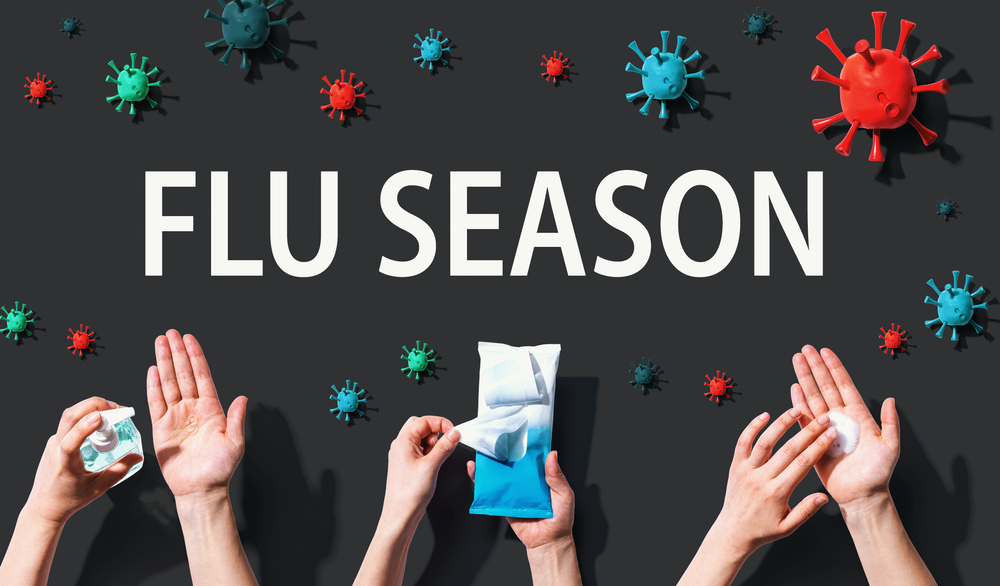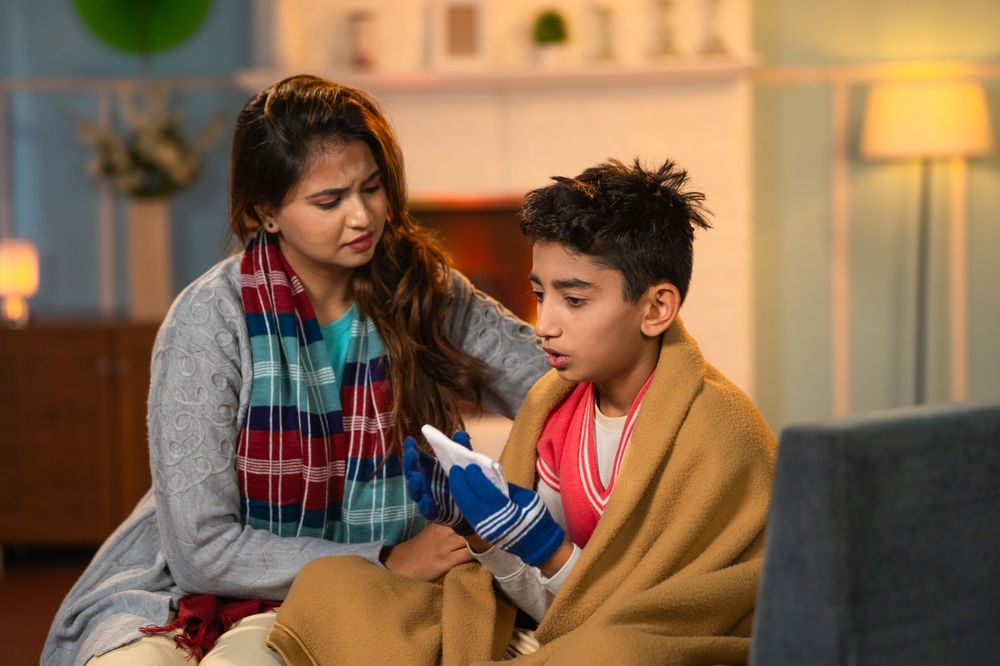by Michelle Place, CRNP-P
Let’s Do the Math
This time of year it seems like our kids are sick constantly. Fever, congestion, mucus flowing from every orifice and coughing. Oh the coughing! Coughing in the morning, coughing in the daytime, coughing all night long. Will it never stop? Something must be really wrong, this can not be normal.
Sorry to say but it is very normal. The average child suffers from 6-10 colds per year. Each cold lasts between 10-14 days. Post nasal drip and it’s resultant cough can continue for an additional 2 weeks. The majority of these illnesses occur between September and April, the cold weather months when children are cooped up together refusing to share anything except their germs. In order for the children to squeeze all of these illnesses in, they often start with the next cold before they have quite finished up with the last one. So, let’s do the math: 6-10 colds concentrated over 8 months time, each with symptoms lasting 2-4 weeks = non-stop snot.
Right? Wrong!
As parents the desire to alleviate our children’s suffering (and get a good night’s sleep) often drives us to the drugstore for some medicine to make it all better. Ads on TV and in magazines market these drugs as, if not a cure for the common cold at least a cure for it’s symptoms. In one study that looked at use of these medications by children it was found that 1 in 10 children, that is over 7 million individuals, are given an over-the-counter (OTC) cold medication in any given week. They would not sell so much of this stuff if it did not do some good, right?
Wrong! There have been many, many studies done to look at the efficacy of OTC cough and cold medications in treating these symptoms. Some research shows that these products may alleviate some symptoms in adolescents and adults but that they do not achieve such claims in the younger pediatric population. In fact, studies in children of the immediate, short-term (within 48 hours) as well as the long-term (after 72 hours) effects of cough and cold preparations showed no significant difference between OTC medications and placebo.
Despite this fact parents feel they must try something to make things better. Confronted with the myriad of choices in cold and cough medications many parents figure that even though trying it may not help it certainly could not hurt. They would not have all of these medications right there on the shelves where anyone could buy them without a doctor’s consent if it could be dangerous, right?
Wrong! Annually, it is estimated that over 7,000 children under 12 years of age are treated in emergency
departments for adverse drug events related to cough and cold medications. These events range in severity from increased drowsiness to death. Most of these incidents involve children aged 2-5 years with most fatalities seen in infants under 2 years of age. The majority of these visits resulted from unsupervised ingestions but a significant proportion were due to dosing errors by parents or other caregivers.
Children. Not Small Adults
There is a lack of clinical and pharmacologic studies in children. Studies are done with adult participants and then pediatric dosages are extrapolated from adult data. The result is a lack of formal dosing recommendations for young children. Children metabolize and react to medications differently than adults, often in unanticipated ways. Parents should, therefore, not guesstimate a dose for their child based on recommendations for adults. Just because your 4 year old is about half your size does not mean that an adult dose of 1 teaspoon can be translated to 1/2 teaspoon for your little one.
All teaspoons are not created equal
Despite the fact that there are many different products with similar active ingredients on the shelf there is no uniformity between brands. As a result, concentrations and dosages of these medications for young children are not standardized across products. The dosage delivery devices also differ from product to product. As a result in order to dose a medication properly you must use the measuring device that came with that product. If the dose is a teaspoon you can not use a teaspoon from your kitchen or pull just any of those little plastic measuring cups saved from previously used medicines out of the drawer. If you do, you may inadvertently be giving your child the wrong amount of medication.
Read labels carefully
Over half of pediatric cold and cough medications contain multiple ingredients which increases the risk for a child accidentally receiving more than one product with the same active ingredient. For example, cold and cough preparations often contain acetaminophen (Tylenol). If you do not read the label carefully you could give a dose of a medication like this to your child, then a couple of hours later, when there has been no improvement (because these drugs do not work in children), you may decide to try a dose of tylenol alone to alleviate discomfort. Just like that you have overdosed your child with acetaminophen.
Due to the unintentional overdoses of cold and cough medications and the link between these medications and infant deaths, the FDA and the Pediatric Advisory Committee unanimously recommended that these agents not be used in children aged < 2 years. A majority also voted that they not be used in children < 6 years of age. As a result, manufacturers of these products voluntarily agreed to remove “infant” formulations marketed for children < 2. Labels were also changed to indicate that the products are not recommended for children < 4 and for children aged 4-6 to check with a doctor before giving.
In a Nutshell
OTC cold and cough medicines are dangerous for children under 2 years of age. They are ineffective and unsafe for children under 6 years old. Their efficacy in children aged 6-11 years is also unproven. The good news is that although cold symptoms are dreadfully annoying they are ultimately not dangerous to our children. They will resolve with time, patience and a lot of TLC.
Further Reading:
http://pediatrics.aappublications.org/content/121/4/783.abstract?sid=e31ecc73-42ca-471d-a4fd-321c5bc59728
http://pediatrics.aappublications.org/content/122/2/e323.abstract?sid=eb76ca65-0e0e-449b-adc1-bce2a06c6384
http://pediatrics.aappublications.org/content/108/3/e52.abstract?sid=71b5e99d-d3cd-455b-a93a-8ddc1d173d1c






